Did the NBA Get Too Much Credit For Its Coronavirus Response?
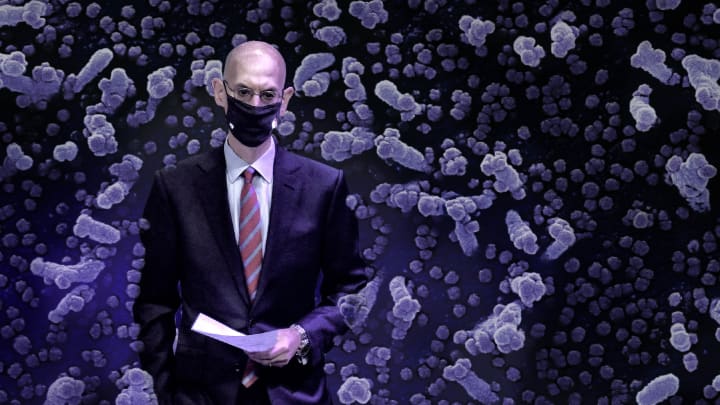
Hours before the NBA changed the course of sports history last March—suspending its season and carving a bold new path to combat the coronavirus—the league found itself confronting a different foe: public health officials.
Local leaders in Washington, D.C., and San Francisco were urging citizens not to gather in large groups, and pleading with sports teams to shut out fans, to help prevent the virus’ spread. The message was not well received by the NBA franchises operating in those jurisdictions.
In San Francisco, the Warriors rebuffed calls to play without fans at the new, $1.4 billion Chase Center—until the afternoon of March 11, when the city made it a mandate. That same afternoon, the company that owns the Wizards and the NHL’s Capitals announced it would continue admitting fans, over the objections of D.C. health officials.
“At the current direction of the NBA and NHL, our games will go on as scheduled and be open to spectators,” read the statement from Monumental Sports and Entertainment, issued around 4 p.m. Eastern Time.
The whole world changed five hours later, with one player’s positive test and one seismic declaration from NBA commissioner Adam Silver: The league would go on hiatus for 30 days—a forecast that, like many others last year, proved overly optimistic. The tense debate about fans in arenas was suddenly moot.

We know significantly more today about COVID-19, and in particular about aerosol transmission, than we did then, and public health experts mostly give the NBA high marks for its handling of the pandemic over the last 12 months—from the decision to shut down, to the planning and execution of the “bubble” season last summer and through all the challenges of the current season, which has been played in home markets.
But it is instructive to note that for all the praise the NBA has justifiably earned, its record is a little more muddled and nuanced than the gushing narratives of the last year suggest. NBA owners and officials did resist calls to ban fans. They did play the bubble season in the Orlando area, at a time when that region had one of the highest infection rates in the country. They did hold an All-Star Game last weekend that many critics, including players, called misguided. They did begin allowing fans (in limited numbers) to return to games this season, despite continued high infection numbers across the country. And they have had to postpone 31 games so far this season, due to either player infections or contact-tracing protocols.
“In many ways, the NBA led professional sports, and led much of society in signaling when this pandemic had arrived, and how we had to address it,” says Neel Gandhi, an associate professor of epidemiology at Emory University in Atlanta.
In general, the NBA has followed the science and the advice of experts, albeit while still seeking to protect its own substantial economic interests, like any other multibillion-dollar industry. The decision to suspend play was indeed a profound moment, prompting other leagues to follow suit, and underscoring the seriousness of the pandemic at a time when most of the public had yet to come to terms with it.
“I think we've done about as well as we could have, under the circumstances,” Silver told me. “I had a number of frustrations along the way in that, certainly beginning last March, we were operating somewhat in the dark.”
Even now, with vaccinations ramping up across the country and infection rates in decline, Silver strikes a cautious tone, recognizing that the virus has been unpredictable, and that new, more infectious strains are spreading.
“What grade we deserve, in terms of how we conduct ourselves over the next year, I don’t think that will be known until sometime from now, when people are looking back under the totality of the circumstances,” Silver says. “And it may be the case that we made mistakes along the way, which we don’t even understand were mistakes at this point. We’re reacting … to the facts as we understand them at any given time.”
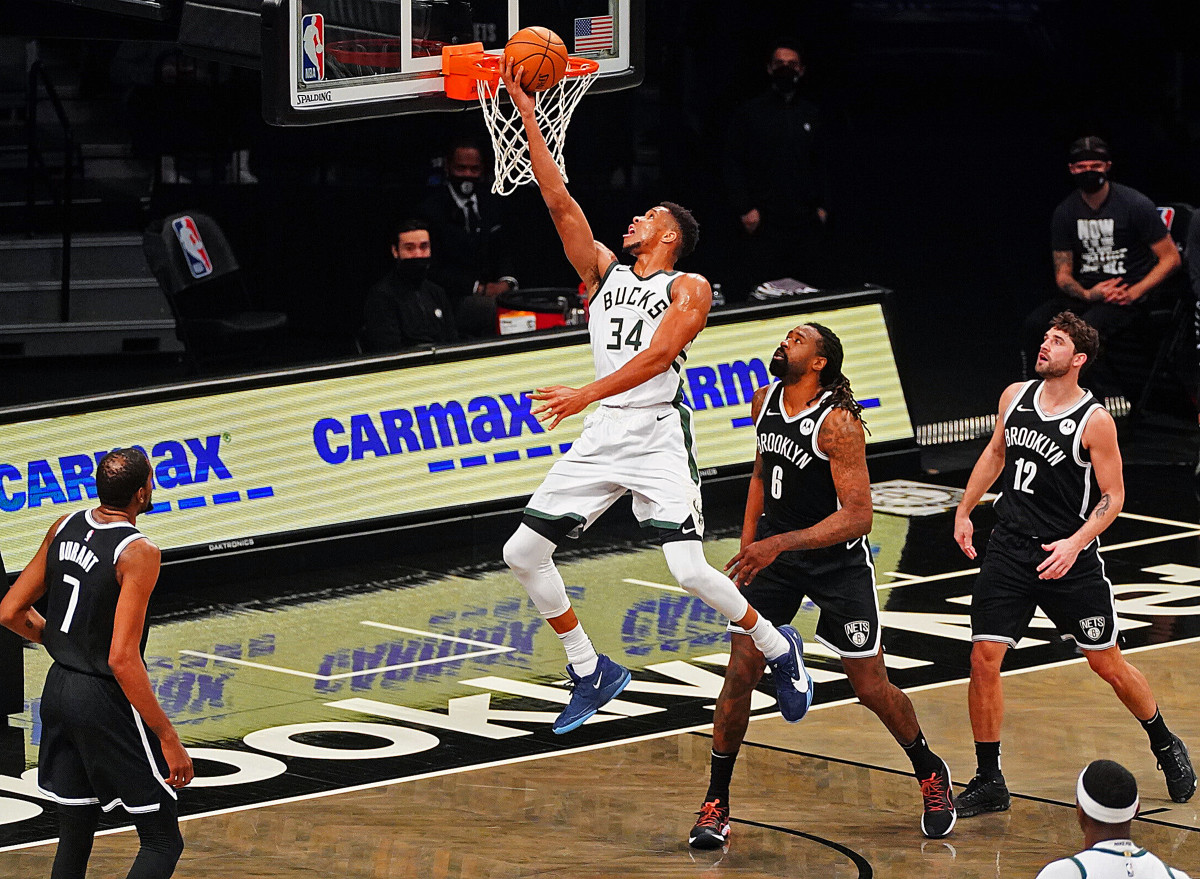
A year later, the subject of fans in arenas is still the one that causes the most consternation.
Fourteen of the NBA’s 30 teams are now allowing fans to attend games again, albeit in limited numbers, and with strict rules on social distancing and mask wearing—and in some arenas, with rapid coronavirus tests required upon entry. Six more teams will begin admitting fans this month. The number of fans permitted in NBA arenas ranges from 778 in Brooklyn (about 4 percent of capacity) to 4,912 in Utah (27 percent of capacity).
“Very disappointing,” says Zach Binney, a sports epidemiologist and assistant professor at Oxford College of Emory University in Atlanta.
Overall, Binney was impressed last year with the extensive protocols the league created to safely resume and finish its season in the so-called bubble on the Disney campus. But bringing fans back now, he says, “has really colored my perception of them.”
“We’re so close to getting [everyone] vaccinated,” Binney says. “It’s just a couple months. And the fact that we are not willing to hold on, just that little bit of extra time, is really frustrating. And I’m frustrated to see the NBA being party to that.”
Gretchen Newman, an assistant professor of infectious disease at Wayne State University in Detroit, called the decision to allow fans “profoundly stupid and unnecessary.”
“We could just be not doing this and not putting anybody at risk at all, and we would all be fine and go on with our day,” Newman says. “On the other hand, in the background of what is happening nationwide, do I think that this is the biggest threat to people? No, I do not. ... It’s the wrong choice, but it’s a minor wrong choice in comparison to all the other wrong choices that are being made.”
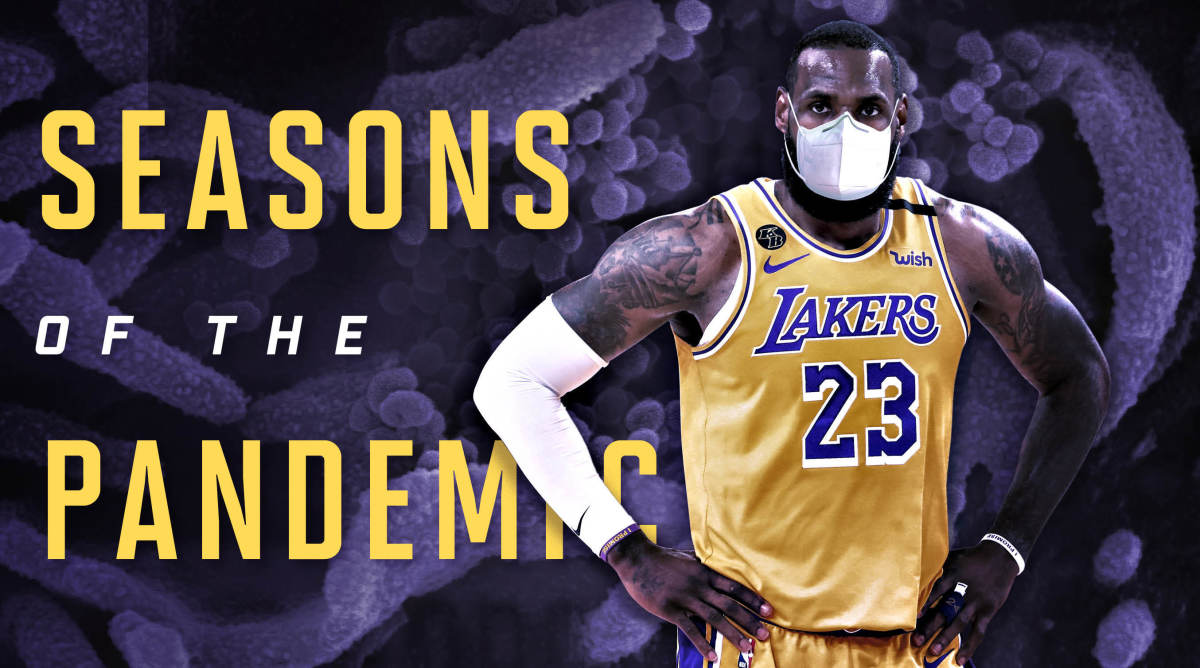
Read More Stories On the Year of the Shutdown
Gandhi also says he was “uneasy” about fans returning now, because although Covid infection rates are declining, the rates in most areas of the country are “at or near the highest peaks we saw in 2020.”
If a league is going to allow fans, Binney says, it should also be actively partnering with public health officials to set up “rigorous” contract tracing and follow-up testing to determine if game attendance is a source of virus spread.
“But they're skipping over that,” he says. “They're just kind of following the same, anarchic approach that the NCAA and the NFL decided to go, which was, 'Hey, whatever local authorities will let us get away with, we're going to do that. And we're not really going to worry about it outside of that.’ ”
Silver readily admits that the NBA is balancing a number of competing interests, including economic ones, in every decision it makes. Allowing fans to return is part of that. And the league is only doing so within the guidelines set by elected and public health officials in each city.
“We would never have fans in a jurisdiction where the local government isn't explicitly allowing it, and where they're setting the conditions in which those fans come in,” Silver says. “And I'd say, having been at this for a year now, that the difference I think between maybe an epidemiologist and a public health official, is that often it's the job of a public health official or ultimately governmental leaders to balance risk. And I think sometimes what a medical expert is not factoring in is also the risk that comes from economic shutdown.”
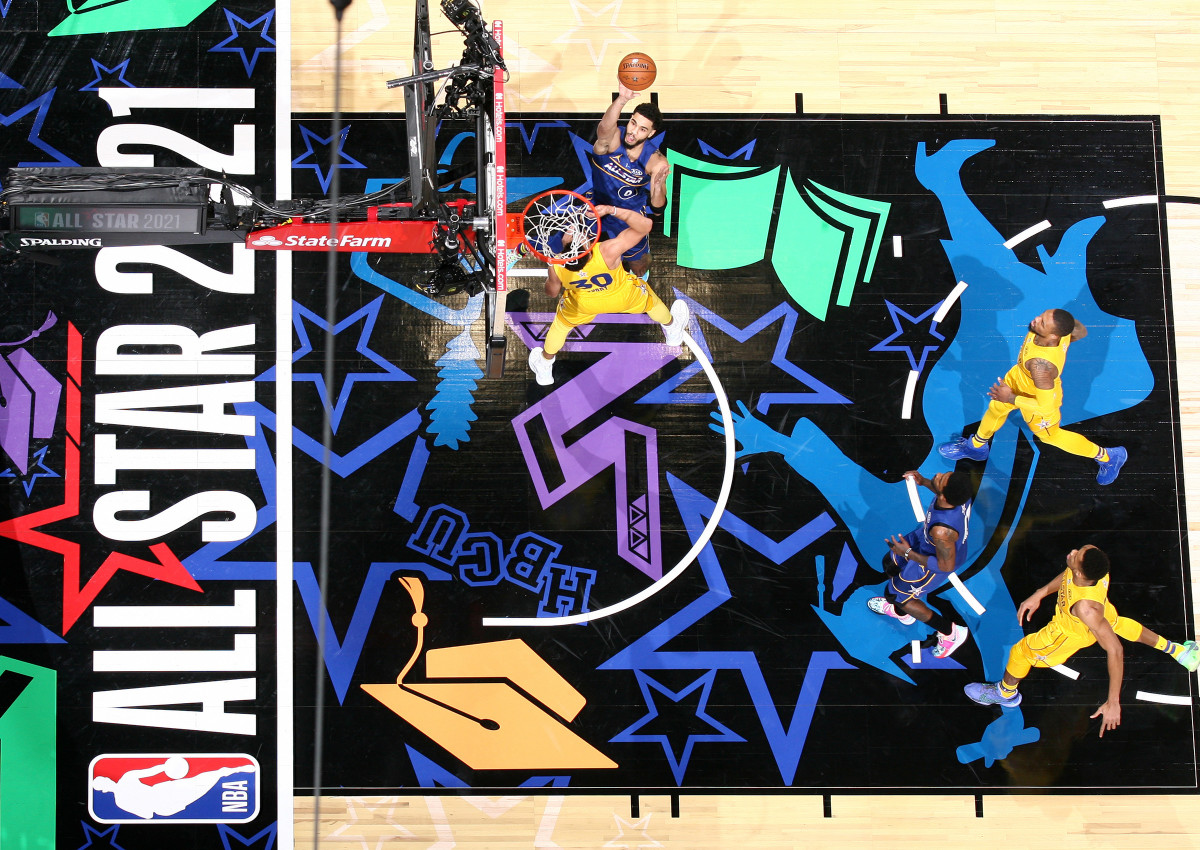
The NBA’s All-Star Game, held last weekend in Atlanta, was roundly criticized as ill-advised, unnecessary, a cash grab. That’s not so surprising. The surprising part is that the game’s most prominent critics were the All-Stars themselves.
LeBron James, commenting in early February, called it “a slap in the face” and said he would have “zero energy and zero excitement” for the game. Giannis Antetokounmpo seconded those remarks the next day, saying, “I don’t care about the All-Star Game.” Kawhi Leonard said the league was “putting money over health.” DeAaron Fox (who did not make the All-Star team) called the league’s decison “stupid.”
Public health experts were concerned, too – about having 24 players and countless NBA personnel traveling from various cities to Atlanta, and about the inevitable events and parties that local promoters would hold to capitalize on the event. Although the league allowed only 1,500 fans (all health-care workers) inside for the game, Binney felt the game would needlessly draw more outsiders and party-seekers to town. He called the game itself “superfluous.”
“I'm worried about the effect on my city, Atlanta,” Binney said before All-Star weekend. “Are we bringing a lot more fans here, and are they gathering in bars and hotels and spreading the virus that way and then spreading it to my fellow Atlantans?”
League and city officials did urge local promoters and clubs not to hold events around All-Star weekend, though such events are largely beyond their control. Georgia does not have a statewide mask mandate, although some cities (including Atlanta) do require masks in public. Restaurants in Georgia are allowed to operate at full capacity, and all private businesses in the state are permitted to opt out of mask mandates.
Experts were less concerned about the game itself, given the NBA’s strict protocols. Players traveled to and from the game on private planes, were tested daily (as they have been all season) and were effectively restricted to the hotel and the arena once in Atlanta.
“There's no decision that we've made in the last year that is risk-free,” Silver says.
The NBA reported zero positive tests related to the All-Star Game. The only hitch of the weekend was the discovery that 76ers All-Stars Ben Simmons and Joel Embiid had been exposed to someone who had tested positive for the virus before they left Philadelphia. Both players were put into quarantine protocols after arriving in Atlanta, then sent back to Philadelphia hours before the game. Both have continued to test negative for the virus.
The league’s greatest concern surrounding the All-Star Game was not the 5% of players who traveled to Atlanta, but the other 95% who got to enjoy a five-day vacation—albeit with some restrictions on travel and continued daily testing. According to the NBA’s computer models, “it is likely we will have an uptick in positive cases when the guys come back” to their teams this week, Silver says.
“There's no doubt we're introducing additional risks,” Silver says of players traveling during the break. “There's absolutely no doubt. But yet it was felt to be needed and worth it for the overall physical and mental well-being of our players.”
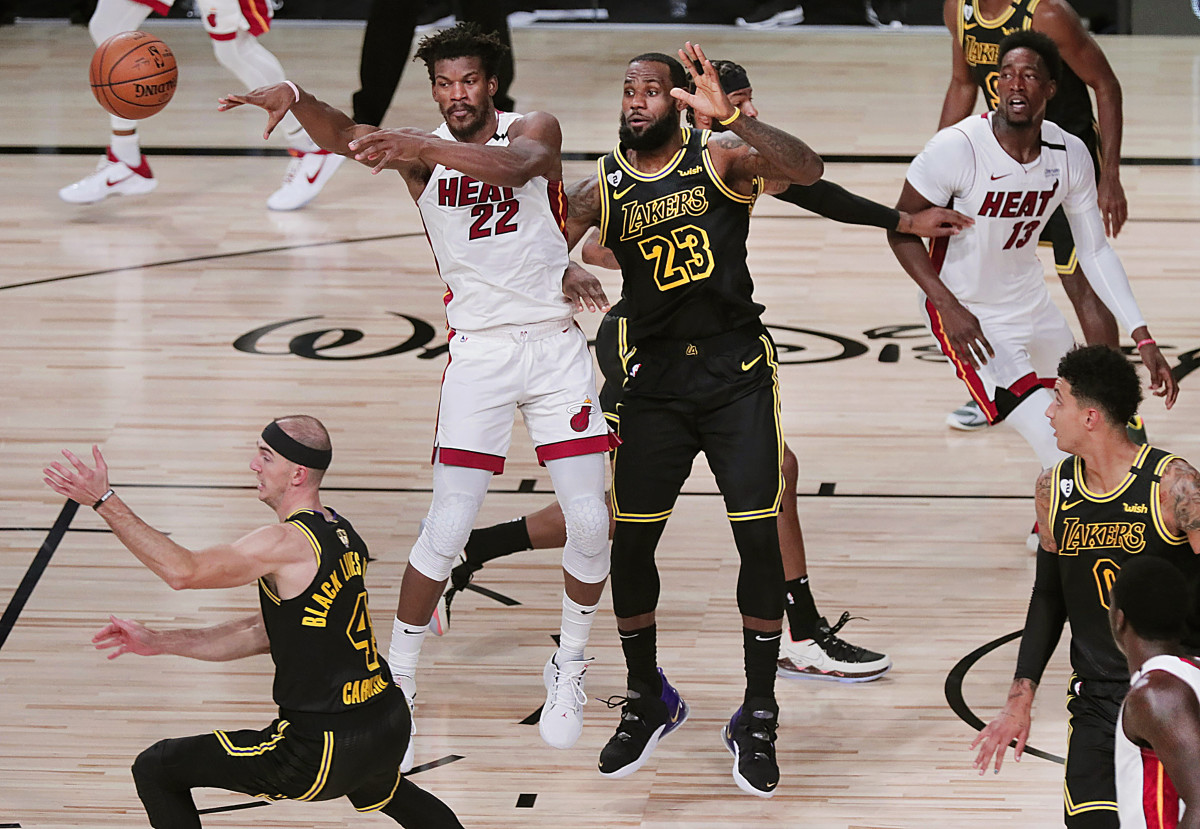
The last critical voice worth hearing is Silver himself. Reflecting on a year of judgment calls, statements and dozens of difficult decisions (some quick, some deliberative), he does spot a few regrets.
The night after the NBA suspended play, Silver went on TNT and said the pause in the schedule would last “at least 30 days”—a timeline that suggested much more optimism than was warranted. The league did not actually resume play until mid-July, four months later.
“I was sort of just picking that number somewhat arbitrarily,” Silver says. “I was referring to it as a hiatus.” The league at that time thought it could simply institute a new set of protocols and resume play within a short period of time.
The other decision that causes Silver to wince a little now is the choice of Disney World for the NBA’s bubble campus last summer. At the time the NBA chose the site, last May, infection rates in that region were comparatively low. Yet by the time teams actually began arriving, in early July, that part of Florida had some of the highest infection rates in the country. “So in retrospect, we chose the wrong location and unnecessarily added additional risks,” Silver says.
No NBA players or coaches contracted the virus in the bubble, and the experiment was declared a huge success. The league’s protocols, which involved twice-daily testing and effectively sequestering all NBA personnel and media, proved effective in keeping the virus out. But there was some risk, as significant numbers of Disney employees, many of them untested, came and went every day.
“It worked out well,” Silver says. “But again, if I had full information earlier on, we would have tried to find a location that had a lower case rate.”
Looking back, the bubble—as complicated as it was to establish—was the easy part. Playing this season in home markets, without the benefits of a hermetically sealed environment, has proved much tougher.
Fifty-one players—about 10% of the league—have tested positive for the virus since Dec. 16. As of Wednesday 102 players—or 23 percent of the league—had missed at least one game due to the league’s health and safety protocols, meaning they either tested positive for the virus or were exposed to someone who did. It’s the rate of positive tests that’s most concerning to the medical experts who follow pro sports, since the long-term impacts of COVID-19 remain unclear.
“There's definitely cardiac impacts that you can have from COVID,” Newman says. “But then there's smaller stuff, too,” such as lingering fatigue and shortness of breath. “Let's say you can only go six minutes instead of nine minutes without needing to be replaced. That's a huge impact on your career. … It's something that I hope that their union, and the owners and the players themselves are really taking into consideration.”
Thirty-one NBA games have been postponed so far—21 of them in a three-week span of January, when the United States was experiencing its worst period of infections since the pandemic began. The Wizards were effectively knocked off the schedule for two weeks.
Which brings us to Silver’s last major regret: restarting the season Dec. 22, just before the country plunged into its worst stretch.
“Certainly, no one had a sense when we were opening that we were about to get that much worse,” Silver says. “If we could have avoided the very worst month of the pandemic, which turns out to be January, of course, we would have.”
The league tightened its protocols during that stretch, imposing twice-daily PCR tests for all team personnel and further restricting player movement, especially on the road. The league has had far fewer issues since then, likely due to a combination of the new rules and a falling case rate across the country.
One new edict fell flat, however: an attempt to ban postgame fraternizing—the hugging, dapping and chatting that follows every NBA game. Players have all but ignored the rule, continuing to hug, dap and chat at close range after nearly every game. After one recent game, Hornets star LaMelo Ball and Trail Blazers star Carmelo Anthony not only hugged, but exchanged jerseys and posed for photos. League officials insist that the rule remains in effect and is being quietly enforced—which suggests that players are either being scolded (unlikely) or fined some nominal amount (more likely). Not that this particular measure matters much, at least in the eyes of medical experts.
“It feels like a little bit of hygiene theater,” Binney says. Although every second spent in close proximity theoretically matters, Binney says the added risk of the postgame hug is minimal. He says the better approach would be to require masks for all postgame socializing.
But these are minor critiques. “I would say overall, the NBA has actually done quite well,” says Newman. “Particularly in comparison to their peers in other major professional sports, they've done a really good job.”
And yet the NBA’s signature moment in this pandemic—the decision to suspend play one year ago today—was not so much a product of foresight, but happenstance. Jazz star Rudy Gobert tested positive for the virus that night, just before a scheduled game against the Thunder in Oklahoma City. Unsure of how long Gobert had been infectious, or how many others he might have exposed, the league did the only sensible thing it could. It hit the pause button.
“I completely accept that it was the circumstances presented to me,” Silver says. “And I think that most reasonable people would have reacted the same way, based on that set of facts. I don't claim to have had some unique foresight into what was coming, and I was not trying to make a larger statement.”
The NBA was not the first sports league to suspend play—the Ivy League had canceled all spring sports earlier that day. But the NBA’s decision reverberated much more loudly, and soon every major sports league was following its lead. Soon after that, commentators were musing that the NBA might have saved sports, and lives.
It’s fair to wonder, though: What if Gobert hadn’t tested positive that night? The NBA likely would have kept playing—until another player tested positive, or until the government intervened.
“The season, hypothetically, could have gone for another week, had we not been testing our players,” Silver says. “And we may have been shut down by public health officials. But it may have only been after there truly was spread among fans in an arena.”
The worst is presumably behind the NBA, and the country. Vaccinations are increasing. Case rates are falling. Perhaps we’ll even see full arenas again sometime in the playoffs this spring. Silver isn’t ready to make any assumptions, not after all he has seen over the last 12 months.
“I've been nervous every day,” Silver says, chuckling slightly. “Beginning even before last March 11, when we started to understand … what we were likely going to be dealing with, it's been a steady state of nervousness for me and my colleagues.”
